
Yamaha Saluto vs Honda CB Shine: Comparison Review Photo Gallery
- Jul 20, 2015
- Views : 170307


When one pictures frugal commuter motorcycles, Yamaha is one name that doesn’t strike your mind first. The Japanese two-wheeler giant renowned for its engineering prowess has been present in the Indian commuter market for many years, yet it hasn’t left a mark in this segment. It’s the 150cc range of motorcycles that have helped establish them in our motorcycle market. But the Japanese manufacturer knows that it really needs to penetrate the commuter segment to increase its volumes as they form the bulk of the two-wheeler sales. The commuter segment can also be split into two segments – 110cc and 125cc segment and it is the later where Yamaha wants to focus its attention with the newly launched Saluto. But the task on its hand isn’t easy as it will compete against Honda’s highest selling motorcycle globally – the CB Shine. The Honda CB Shine has dominated proceedings in the 125cc segment with sales over 30 lakh units since its debut in India. Has Yamaha cracked the code of the CB Shine success with the new Saluto? Read on..
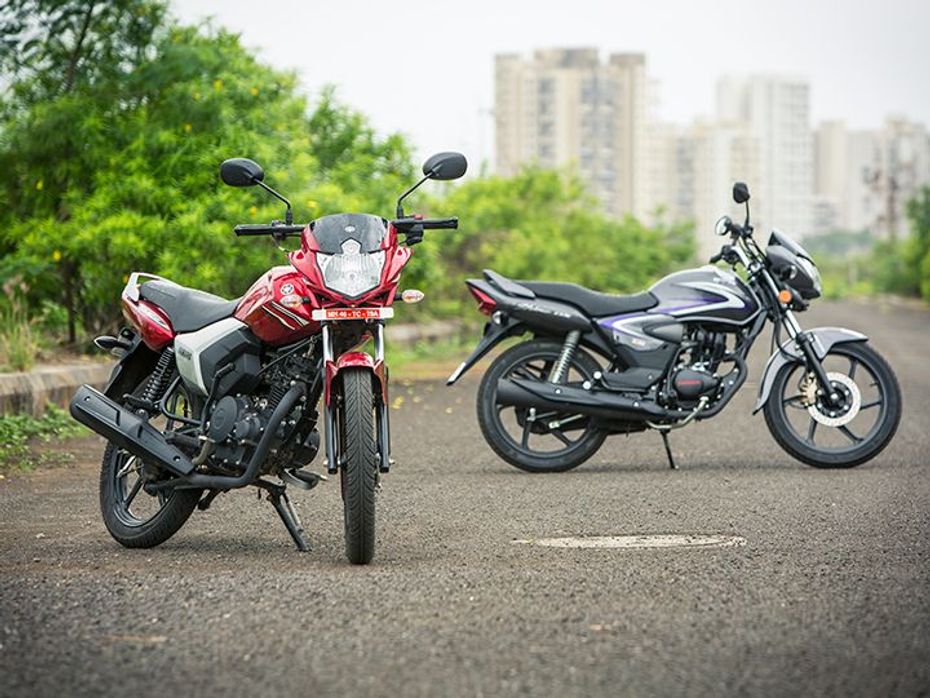
Design and Features:
Yamaha Saluto: rating_4.0_rating
Honda Shine: rating_3.5_rating
Yamaha designers have endowed the Saluto with edgy and sharp lines to make it stand apart from its rivals. The raked bikini fairing with creases is sharp and striking. The pentagonal shaped pilot lamp that sits between the headlamp and the windscreen is a neat addition and gives the Saluto a distinctive face. The black strip (metal fuel tank) running through the centre does look good and we should point out that the tank has been wrapped on both the sides with plastic panels. The side panels do flow well with the edgy design but we found the tail lamp unit to be a bit flat and stretched.
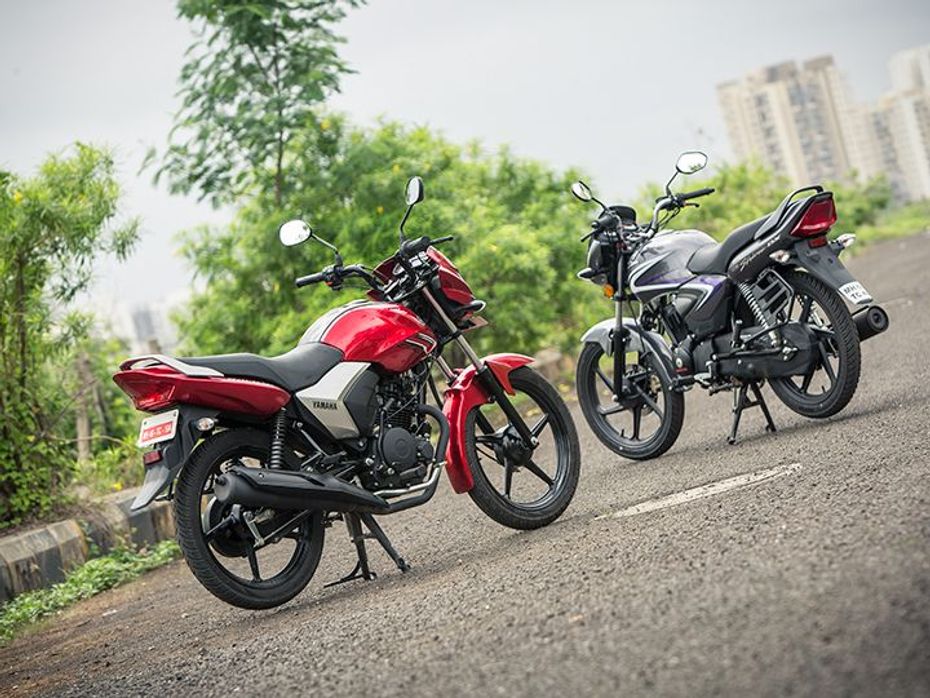
The Honda CB Shine has a more conservative styling in comparison to the Saluto with more rounded lines. The Honda offering has a typical commuter styling which is a bit boring but seems to have worked for the mature buyers who are the target audience of the motorcycle. Talking about features, both the motorcycles get equipped with alloy wheels, electric start, alloy grab rails and tubeless tyres. The Yamaha and Honda offering employ an analogue instrument console with speedometer, odometer and fuel gauge. The CB Shine’s twin pod unit feels more pleasing on the eye. Switch gear quality is decent on both the bikes but the CB Shine’s felt better designed ergonomically. Overall build quality of both the motorcycles is good and they are solidly put together.
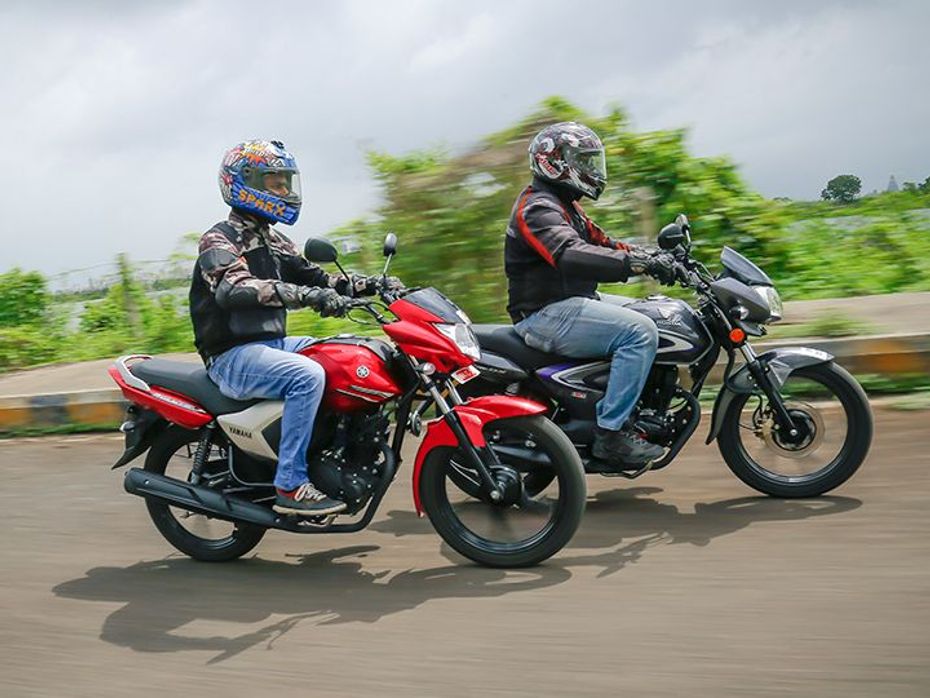
Engine and Performance:
Yamaha Saluto: rating_3.5_rating
Honda Shine: rating_4.0_rating
Powering the Yamaha Saluto is a all-new 125cc displacement engine churning out 8.3PS at 7,000rpm and 10.1Nm of torque at 4,500rpm. While the power output seems a bit less in comparison to its rivals, the 112kg kerb weight has helped the Saluto in making up the power deficit. It’s a bit slow off the line but has a strong mid-range which helps it with good roll on accelerations. It also has better top end compared to the Honda CB Shine, but what really disappointed us was its lack of engine refinement. The Saluto engine isn’t refined like other Yamaha powerplants and vibes can be felt from handlebars, footpegs and tank even at lower speeds. Power is transmitted to the rear-wheel via a 4-speed gearbox that offer crisp gear shifts.
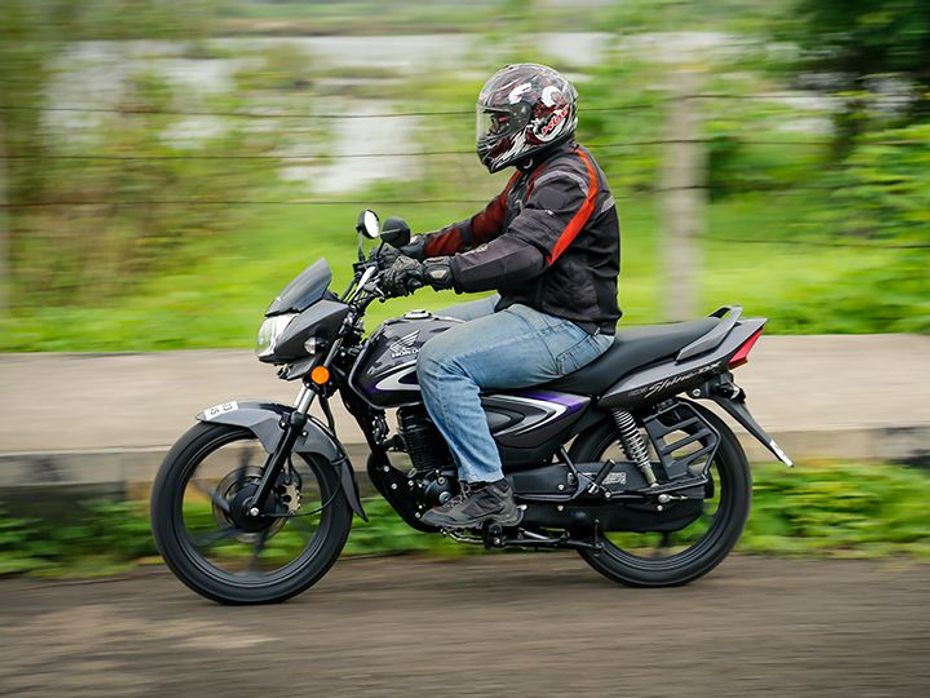
The Honda CB Shine is propelled by a 125cc, air-cooled unit developing 10.7PS of power and 10.5Nm of peak torque. The Honda offering has brisk acceleration and a decent mid-range which is useful for riding in city traffic. The CB Shine feels happy at cruising speeds around 60kmph but at higher speeds the motor feels strained. We must point out that the Honda engine is also vibey as despite the bar-end weights, the handlebar feels juddery. Having said that, the overall refinement is better than the Yamaha Saluto. The gearbox on the CB Shine felt a bit notchy and cumbersome in comparison.
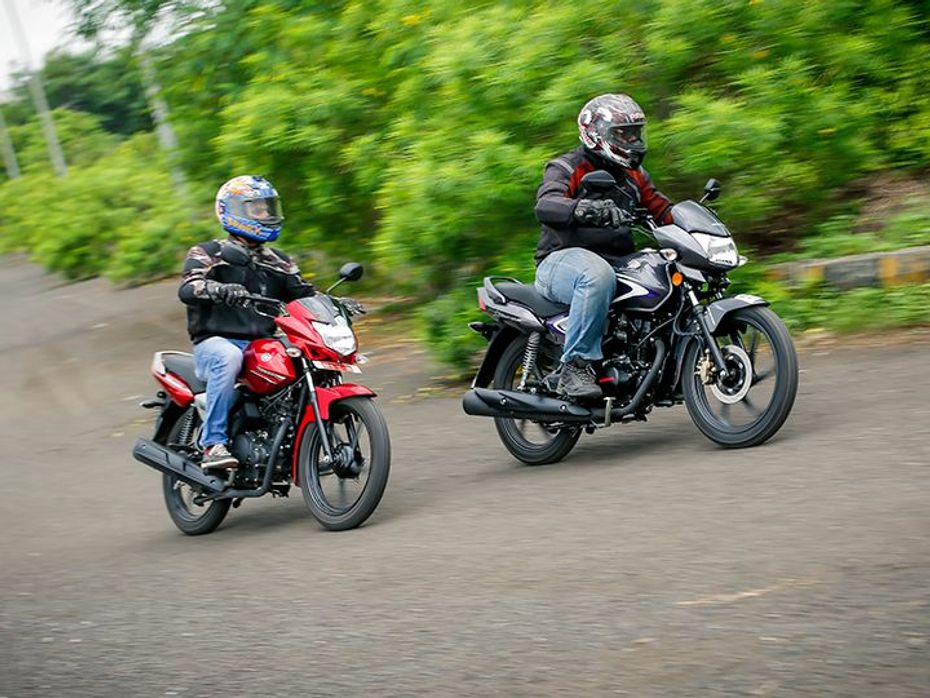
Ride, Handling & Braking:
Yamaha Saluto: rating_3.0_rating
Honda Shine: rating_4.0_rating
Suspension duties on both the motorcycles are handled by telescopic front forks and twin hydraulic shocks at the rear. The Yamaha Saluto feels the stiffer among the duo while the Honda CB Shine offered a plusher ride quality. The stiff suspension setup though benefits the Saluto with respect to handling. A commuter has to be quick on its feet and change directions swiftly and on this aspect the Yamaha motorcycle scores highly. It changes direction in a lightning quick manner and also has the shorter turning radius.
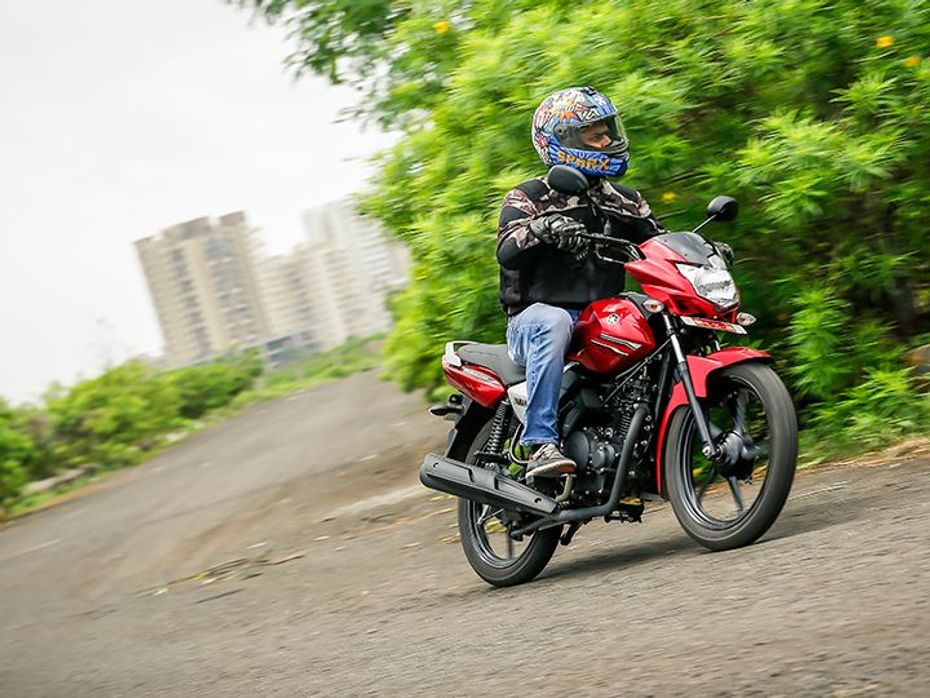
Another factor helping the Yamaha Saluto in agility is the fact that its 9kg lighter than its Japanese rival. The Honda CB Shine that we tested came equipped with optional front disc brake with CBS (combi brake system). So it wasn’t surprising that the Honda had better braking performance. The Yamaha Saluto was offered with only drum brakes at front and rear at the time of launch but recently optional front disc brake has been added. The current drum brake setup on the Saluto lack bite and feel and braking performance was disappointing.

Riding Ergonomics & Pillion Comfort:
Yamaha Saluto: rating_3.0_rating
Honda Shine: rating_4.0_rating
Being commuter motorcycles, the Honda CB Shine and Yamaha Saluto have raised handle bars and centre-set footpegs. Riding posture on both the bikes is upright and comfortable. But the Yamaha Saluto felt a bit narrow and cramped for our likening. Even the handlebars felt a bit confined as opposed to the wide bars of the Honda CB Shine. The cushioning of the seat on the Saluto is too soft while the CB Shine’s is firmer and overall it has better riding dynamics among the duo especially for larger built consumers. The wider seats of the Honda motorcycle and suppler suspension meant that it scores highly on pillion comfort. The long seat on the Yamaha Saluto though is good for riding with more than one pillion which though is illegal, is a common affair in rural market.
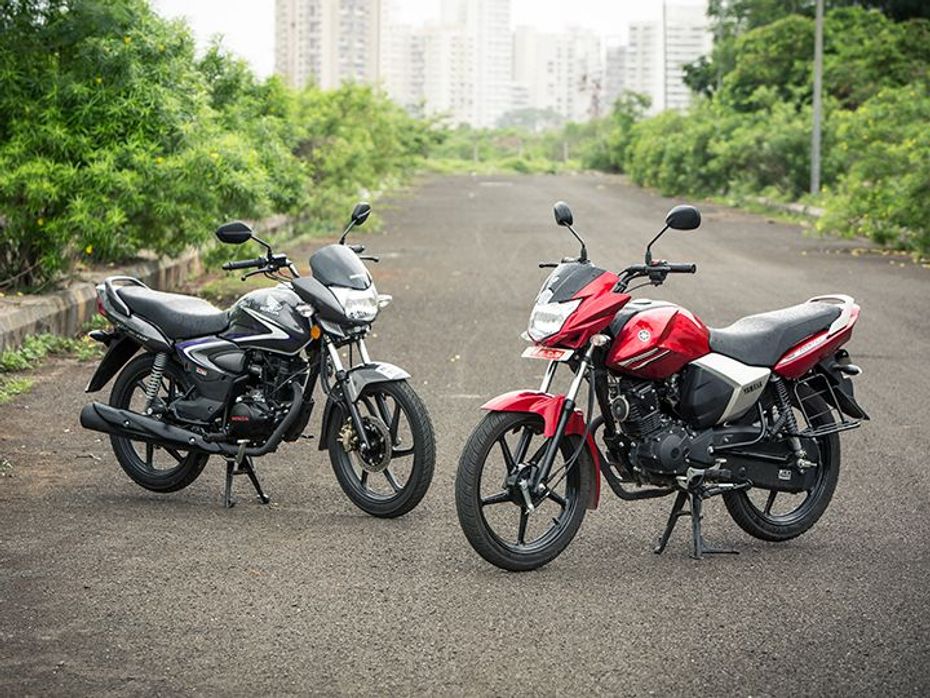
Fuel economy & Pricing:
Yamaha Saluto: rating_4.0_rating
Honda Shine: rating_3.5_rating
Yamaha claims that the Saluto is among the most frugal 125cc motorcycles in the market with 78kmpl (claimed figure). But in real world conditions both the Japanese motorcycles will return an overall mileage of around 65 to 70kmpl if ridden sedately. The Honda CB Shine though has better range owing to its 11 litre fuel tank while the Saluto has a meagre 7.6 litre tank capacity. The base version of the Yamaha Saluto has been priced at Rs 52,000 while the recently launched disc brake version carries a Rs 2,500 premium. The Honda CB Shine comes in three variants – the base variant retails for Rs 55,559, the disc brake variant at Rs 58,736 and the top-spec CBS variant carries a price tag of Rs 61,299. With the respect to value, the Yamaha Saluto clearly leads the way.
Note: All prices mentioned are ex-showroom Delhi.

Verdict:
Yamaha Saluto: rating_3.5_rating
Honda Shine: rating_4.0_rating
The Yamaha Saluto is a decent effort by the Japanese two-wheeler manufacturer. It addresses all the basic necessities of a 125cc commuter motorcycle customer with the added bonus of snazzy styling. But there are some rough edges like brakes, switch gear quality, vibey engine etc that Yamaha needs to address. The Honda CB Shine despite its limited updates in the past few years still remains an excellent 125cc motorcycle. It is comfortable, frugal and reliable an aspect where the Yamaha Saluto remains untested. So if you’re on a budget and looking for a 125cc commuter go for the Yamaha Saluto but are willing to stretch a bit, well you can’t go wrong with the undisputed king of the segment- Honda CB Shine.
Spec Sheet:
|
Yamaha Saluto |
Honda CB Shine |
|
|
Engine |
125cc, air-cooled, single-cylinder |
125cc, air-cooled, single-cylinder |
|
Power |
8.3PS @ 7,000rpm |
10.7PS@ 9,500rpm |
|
Torque |
10.1Nm @ 4,500rpm |
10.3Nm @ 7,000rpm |
|
Transmission |
4-speed constant mesh |
4-speed constant mesh |
|
Underpinnings |
||
|
Suspension |
Front – Telescopic forks |
Front – Telescopic forks |
|
Brakes |
Front – Disc brake (optional) |
Front – Disc brake (optional) |
|
Tyres |
Front – 80/100 R18 |
Front – 80/100 R18 |
|
Fuel tank |
7.6 litres |
10.5 litres |
|
wheelbase |
1,265mm |
1,266mm |
|
Length x width x height |
2,035 x 700 x 1,080mm |
2,012 x 762 x 1,266mm |
|
weight |
112kg |
123kg |
|
Ground clearance |
180mm |
157mm |
|
Price (ex-showroom delhi) |
Rs 52,000 |
Rs 55,559 (base) Rs 58,736 (disc brake) Rs 61,299 (disc with CBS) |

Yamaha Saluto vs Honda CB Shine: Comparison Review Photo Gallery

Honda Shine vs Bajaj Discover 125 DTSi

Yamaha Introduces Matt Green Colour To The Saluto

Bikes that failed to impress in 2015

Yamaha India launches 2015 Saluto motorcycle with disc brake

Yamaha India hopes to hit 1.2 million units sales by 2017

Yamaha Saluto 125cc launched in India at Rs 52,000

Yamaha India to launch new 125cc bike Saluto in second half of April
 Hero Splendor Plus
Hero Splendor Plus
 Hero Super Splendor
Hero Super Splendor
 TVS Star City Plus
TVS Star City Plus
India's largest automotive community
 Yamaha MT 15
Rs. 1.69 Lakh
Yamaha MT 15
Rs. 1.69 Lakh
 Yamaha R15 V4
Rs. 1.83 Lakh
Yamaha R15 V4
Rs. 1.83 Lakh
 Yamaha yzf r15 v3
Rs. 1.66 Lakh
Yamaha yzf r15 v3
Rs. 1.66 Lakh
 yamaha fz s fi version 3
Rs. 1.22 Lakh
yamaha fz s fi version 3
Rs. 1.22 Lakh
 Yamaha fzs fi v4
Rs. 1.30 Lakh
Yamaha fzs fi v4
Rs. 1.30 Lakh
 Yamaha Ray ZR 125
Rs. 92,880
Yamaha Ray ZR 125
Rs. 92,880
 Yamaha Aerox 155
Rs. 1.49 Lakh
Yamaha Aerox 155
Rs. 1.49 Lakh
 Yamaha Fascino 125
Rs. 92,680
Yamaha Fascino 125
Rs. 92,680